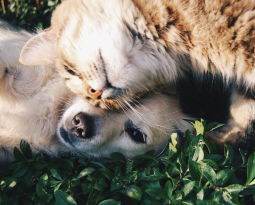Chiggers are parasitic pests that can infect your dog (and you) with a disease or illness if contaminated. Unfortunately, most pet owners don’t realize that their animals have a chigger problem until there’s a full-on infestation or the pet is itchy. These parasites are so small that spotting a single chigger is extremely hard to do before your animal shows other signs of hosting these pests. Chiggers threaten animals and people and are extremely troublesome to deal with. Please continue reading to learn everything you need to know about how chiggers affect your pets.
What Are Chiggers?
Chiggers are a type of parasitic mite found in grassy or woody areas near a body of water like a lake or a pond. These parasites cause itching and can lead to an infestation if you don’t treat them immediately. Chiggers like to lay eggs under the skin of mammals which can lead to disease and cause itching. When a chigger bites you, it won’t hurt, and you will not notice it until you or your pets start itching.
These mites are so small that most people can’t see them without a magnifying glass. When you see them, they will be red and have a fat, oval shape similar to other mites.
Signs Your Pet Has Chiggers
Unfortunately, since chiggers are so small, they’re very hard to detect until your pet shows symptoms. The following are signs that your pet has chiggers:
- red bumps on the skin
- hair loss
- abnormal rashes
- incessant itching
- rashes on the body parts of your animal that touch the ground
- crusty orange skin
- skin breakage from the itching and irritation
The symptoms you see for chiggers will look similar to those for fleas, except that chiggers are harder to spot.
Where Do Chiggers Come from?
Chiggers reside in areas with lots of wood and grass. So, if you live in an area that rains frequently or has high humidity levels, you probably see many chiggers, well not see but you get it. So, if you take your pet out for a walk in these areas, it would be best to use a parasite repellent to reduce their risk of getting a chigger infestation.
If you have an animal that has a collar, you might notice chiggers under their collar because they like to hide in spots that aren’t easy to access. For example, if you have chiggers on your person, they will bite you under the elastic of your bra or a wristband. These types of places are their favorite to lurk.
How to Remove Chiggers from Pets
If your dog has chiggers, you can try to remove them at home by bathing your pet. These parasites don’t usually stay on if you wash with soap and warm water and pat dry. After the bath, you can apply a flea treatment to help minimize the problem. It would also be best to give your dog a cream to help with the itching because itching can persist for two weeks, even after chigger removal.
If you still notice bugs on your pet or have trouble washing them, you can bring your pet to a veterinarian, who will help remove the pest. There’s no need to let your animal live with chiggers that cause them distress.
Final Thoughts
Contact us at (520) 297-3593 today if your pet has triggers you can’t eliminate. We can help you remove these parasites and keep them from returning to your pet. We can also help you if your animal companion has itchy rashes all over their skin due to this past. Our experts will walk you through the removal process and help you keep future infestations away from your animals so you don’t have to worry.
If you’re suspicious that the chiggers on your pet caused a disease or illness, we can test and provide treatment. The sooner you visit us for your problem, the sooner your pet will be relieved from any discomfort.







